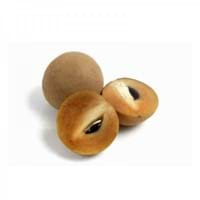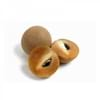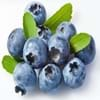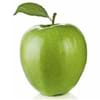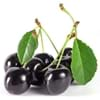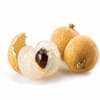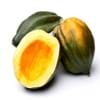Health Benefits
Anti-inflammatory properties, Arthritis treatment, Regulates Blood Sugar, Unknown
Arthritis prevention, Cancer prevention, Gout treatment, Regulation of heart rate, Treatment of osteoarthritis
General Benefits
Boosts immune system, Controls blood sugar levels, Digestive aid
Anti oxidant properties, Anti-inflammatory properties, Controls blood pressure, Cures headache, Digestive aid
Skin Benefits
Nourishes skin, Protects skin from oxidative stress
Anti-aging benefits, Brightens and lightens complexion, Skin rejuvenation, Treatment of dark spots
Hair Benefits
Prevents hair loss, Promotes longer and healthier hair, Regulates hair growth
Acts as moisturizer, Protects hair, Regulates hair growth, Rejuvenates scalp
Allergy Symptoms
Asthma, Red rash, Swelling of mouth, tongue or lips
Anaphylaxis, Breathing difficulty, Fainting, Itching, Nasal congestion, Nausea, Swelling of mouth, tongue or lips, Tingling sensation in mouth, Vomiting, Wheezing
Side Effects
Diarrhoea, Vomiting
Abdominal cramps, Allergic reaction, Bloating, Intestinal gas
Best Time to Eat
As a snack in the late afternoon
Best if taken as a breakfast (or empty stomach), As a snack in the late afternoon, Don't eat after meal, Morning time (before lunch)
Vitamin B5 (Pantothenic Acid)
Vitamin C (Ascorbic Acid)
Vitamin E (Tocopherole)
Not Available
Vitamin K (Phyllochinone)
Not Available
Lutein+Zeaxanthin
Not Available
Calories in Fresh Fruit with Peel
Calories in Fresh Fruit without Peel
Not Available
Not Available
Calories in Juice
Not Available
Calories in Jam
Not Available
Calories in Pie
Not Available
Varieties
Bush Table Queen, Heirloom Table Queen, Festival Hybrid, Early Acorn Hybrid, Table Ace, Ebony and Cream of the Crop
Evan, Mesabi, Meteor, Northstar, Montmorency and Mongolian
Seedless Variety
Not Available
No
Color
Dark green, Green-yellow, Orange green
Red
Inside Color
Not Available
Red
Taste
Sweetish
Sweet-Sour
Origin
Central America, North America, Unknown
Europe, Western Asia
Soil Type
Well-drained
Sandy
Climatic Conditions
Cold, Sunny
Cold
Facts about
- It was named as Acorn Squash for its resemblance to a large ribbed acorn.
- It is said that squash was being grown in Mexico as long as 10,000 years ago.
- It was the first food cultivated by native American Indians.
- Using 1/4 tablespoon of almond extract with cherries, brings out the real flavor of cherries.
- In earlier times, serving cherry pie with ice cream was prohibited.
- 23 April is National cherry cheese cake day.
Spirits
Not Available
Yes
Cocktails
Not Available
Yes
Top Producer
China
Turkey
Other Countries
Egypt, India, Iran, Italy, Mexico, Russia, Turkey, Ukraine, United States of America
Albania, Armenia, Austria, Azerbaijan, Belarus, Croatia, Denmark, Germany, Hungary, Iran, Italy, Macedonia, Moldova, Poland, Russia, Serbia, Ukraine, United States of America, Uzbekistan
Top Exporter
India
Poland
Botanical Name
Cucurbita Pepo
Prunus cerasus
Synonym
Winter Squash
Not Available
Subkingdom
Tracheobionta
Tracheobionta
Division
Magnoliophyta
Magnoliophyta
Class
Magnoliopsida
Magnoliopsida
Subclass
Dillenhidae
Rosidae
Order
Cucurbitales
Rosales
Family
Cucurbitaceae
Rosaceae
Generic Group
Not Available
Rose
Difference Between Sapota and Sour Cherry
We might think that Sapota and Sour Cherry are similar with respect to nutritional value and health benefits. But the nutrient content of both fruits is different. Sapota and Sour Cherry Facts such as their taste, shape, color, and size are also distinct. The difference between Sapota and Sour Cherry is explained here.
The amount of calories in 100 gm of fresh Sapota and Sour Cherry with peel is 40.00 kcal and 50.00 kcal and the amount of calories without peel is Not Available and Not Available respectively. Thus, Sapota and Sour Cherry belong to Low Calorie Fruits and Low Calorie Fruits category.These fruits might or might not differ with respect to their scientific classification. The order of Sapota and Sour Cherry is Cucurbitales and Rosales respectively. Sapota belongs to Cucurbitaceae family and Sour Cherry belongs to Rosaceae family. Sapota belongs to Cucurbita genus of Pepo species and Sour Cherry belongs to Prunus genus of P. cerasus species. Beings plants, both fruits belong to Plantae Kingdom.
